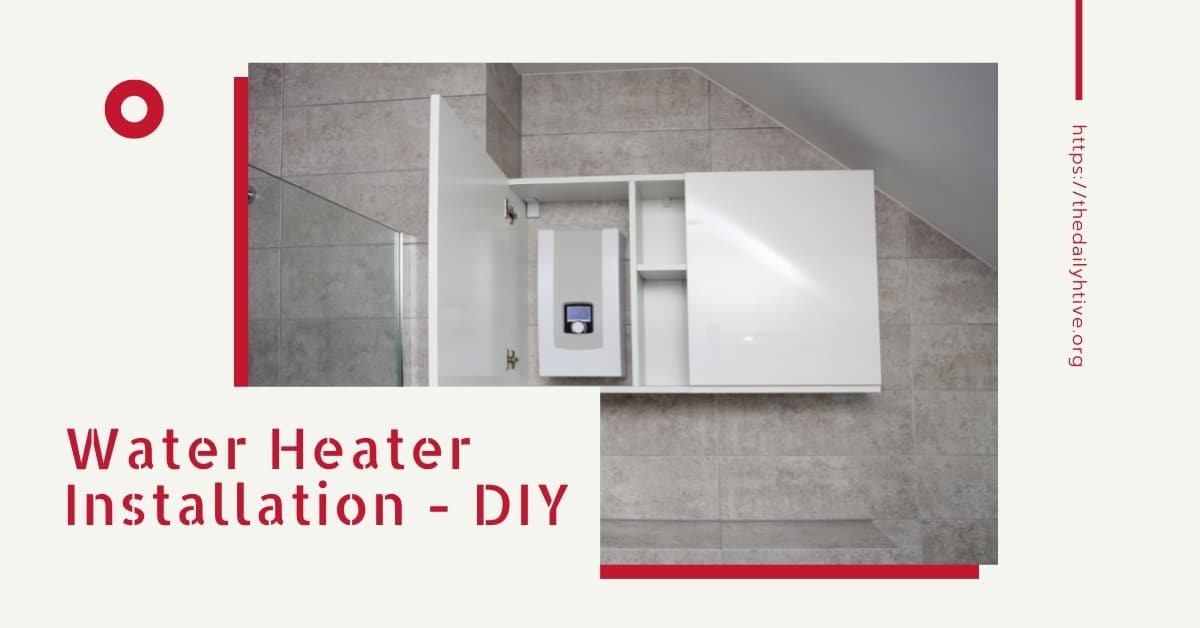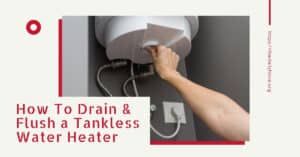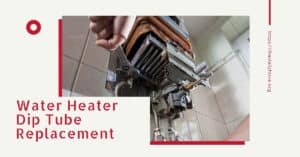Are you looking to install a new gas, electric or tankless water heater to replace your existing system? Below we have set out some guidance notes to help you.
What Type of Water Heater Should You Install? Basically, you have a choice of a tankless system or a storage-tank system to heat water in your home, whether it’s powered by gas or electricity.
The simplest and cheapest option will be to stay with your existing fuel-type water heater, e.g., gas or electric.
If your hot water consumption needs have increased or perhaps decreased, you may decide at this point to either reduce or increase the tank capacity from, say, a 50-gallon tank to a 60-gallon tank or vice versa.
Are you thinking of converting your water heating system from a storage tank to a tankless water heater?
If you are, then pay particular attention to the relative cost from the cost of installation (labor costs), the cost to buy the unit, and the comparative energy savings benefits of each.
If labor costs and the cost to buy a tankless water heater are not an issue – perhaps you just like the idea of having the extra space and the long-term energy savings of a tankless heater – then speak with a local water heater installation specialist to ascertain what the best choice for your particular needs are.
How Much Does It Cost To Install A Water Heater?
Prices will vary, and factors that influence the installation costs include such things as:
- The type of water heater you plan to install.
- Whether you’re installing or replacing a new heater (removal and disposal charges of the old tank may apply).
- Whether you are replacing an old unit with a completely different water heater in terms of size and type of energy used as more labor time and materials will be needed on a complete overhaul and re-plumbing.
- Whether you are installing gas or electric, the latter usually being cheaper to install.
Do I Need a Permit to Install a Water Heater?
If you’re installing a new water heater yourself or getting a handyman or non-licensed plumber, make sure that you or they have the necessary permit in accordance with local Building Codes to undertake the work.
Water heater installation falls under Building Codes, which require that installation work is inspected for safety reasons.
The local inspector has to undertake a number of safety checks, for example, on to the Temperature and Pressure Relief Valve, gas appliances, expansion tank, correct positioning of the tank, and correct installation of the vent pipe, etc.
These safety checks are for you and your family’s safety and – if you sell your property during the lifespan of the newly installed water heater – for the safety of the new owners.
If you don’t obtain the necessary permit, you will be required to obtain a permit at a higher rate than if you had obtained it correctly prior to the installation work.
If any plumbing work is deemed to be in violation of building codes, or if work is found to be unsafe, you will be asked to put right the work in order to correct any violations or make safe any work deemed unsafe.
How To Install A Water Heater
Water Heater Installation is a little bit complex, but that doesn’t really mean they have to be difficult to install. All it requires is plumbing and electrical work and gas depending on your source, all of which are hazardous, so be careful. If you don’t feel 100% confident, call a professional to come. The cost to install a water heater is usually not that expensive.
All water heaters now come with installation manuals and instructions with many warnings to ensure you handle electric gas and all other connections safely.
Tools Needed to Install & Replace a Water Heater
Below is a list of the tools that you’ll need to remove and replace your water heater are:
- Common plumbing tools such as wrenches, pipe cutter, screwdrivers & circuit tester
- Pipe Joint Compound or Teflon tape
- Gas Leak Detection Solution or use dishwashing liquid
- Copper pipe installation kit (for a non-soldering solution to joining pipes)
To install your new water heater, you will need to drain the water from your existing tank and disconnect the service pipes (water and or gas). However, before you start any work, you will need to turn off the utilities to the hot water tank.
Step 1 – Draining the Water Tank
First, turn off the water supply either at the main shutoff valve or the water shutoff valve, which you will find on the cold water supply line that feeds into your water heater.
If you have an electric water heater, turn off the electric supply from the circuit breaker located in the main electrical panel.
If you have a gas water heater, make sure that you turn off the gas supply to the water heater by either shutting off the gas at the main gas shutoff valve for the home or the gas shutoff valve to the water tank. Also, turn the Gas Control Knob to the OFF position. To check that the gas is shut off, the pilot light should be off.
Now you are ready to drain your water heater tank. For information on how to properly drain your water heater, check out our article How to Drain or Flush Your Hot Water Heater.
Step 2 – Disconnect the Water Heater Utility Lines
Once all the water has been drained from the tank, you can begin disconnecting the cold and hot water lines to the tank and, depending on whether your heater is electric or gas, disconnect the gas line or electric connections to the tank.
You should now be ready to remove the old water heater tank and position the new heater so that it is lined up to the existing plumbing points.
Below are 3 articles on installing a Gas, Electric and Tankless Water Heater which will help you.
Installation Instructions – Gas Water Heater
Step-by-step walk-through on how to install your new gas water heater.
Installation Instructions – Electric Water Heater
Step-by-step walk-through on how to install your new electric water heater.
Installation Instructions – Tankless Water Heater
Step-by-step walk-through on how to install your new Tankless water heater.
The Final Thought
Water heater installation is a complicated task. I hope this information helps you understand how to install a hot water heater. If you are not confident in performing the tasks, contact a professional plumber to do this for you.






